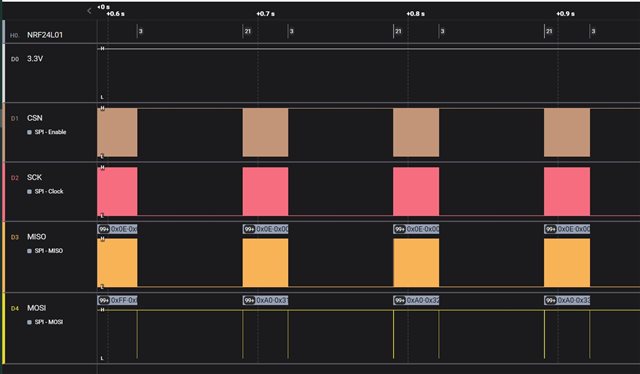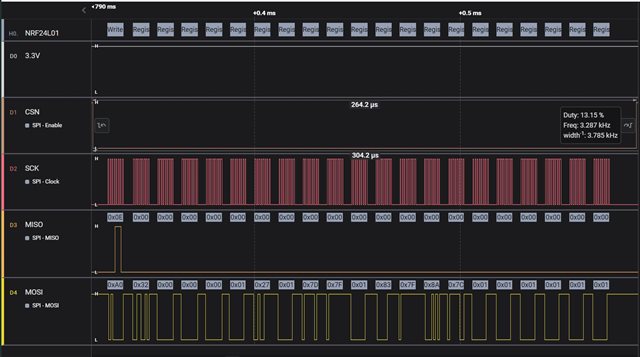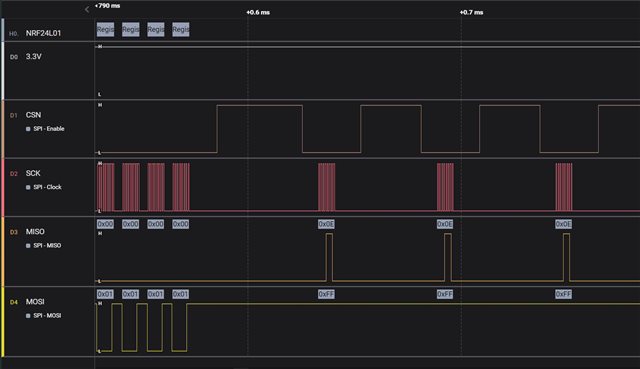Hello all,
1. I have a transmitter (Arduino Pro Mini 5V) connected to a nRF24L01+. I use the following code to set up the radio.
radio.begin();
radio.setChannel(125);
radio.setPALevel(RF24_PA_LOW);
radio.setDataRate(RF24_1MBPS);
radio.setAddressWidth(5);
radio.setAutoAck(true);
radio.setRetries(5, 3);
radio.setPayloadSize(sizeof(radio_data));
radio.openWritingPipe(address);
radio.stopListening();
2. I have a receiver (ESP32) coonecter to a nRF24L01+. I use the following code to set up the radio.
radio.begin();
radio.setChannel(125);
radio.setPALevel(RF24_PA_LOW);
radio.setDataRate(RF24_1MBPS);
radio.setAddressWidth(5);
radio.setAutoAck(true);
radio.setRetries(5, 3);
radio.setPayloadSize(sizeof(radio_data));
radio.openReadingPipe(0, address);
radio.startListening();
3. When I want to transmit data, I call the function write.
The return of the call to the function write is always false, meaning that auto acknowledgement goes wrong.
Have you any idea of what I did wrong ?
Thanks for your help.






